- News
- Reviews
- Bikes
- Accessories
- Accessories - misc
- Computer mounts
- Bags
- Bar ends
- Bike bags & cases
- Bottle cages
- Bottles
- Cameras
- Car racks
- Child seats
- Computers
- Glasses
- GPS units
- Helmets
- Lights - front
- Lights - rear
- Lights - sets
- Locks
- Mirrors
- Mudguards
- Racks
- Pumps & CO2 inflators
- Puncture kits
- Reflectives
- Smart watches
- Stands and racks
- Trailers
- Clothing
- Components
- Bar tape & grips
- Bottom brackets
- Brake & gear cables
- Brake & STI levers
- Brake pads & spares
- Brakes
- Cassettes & freewheels
- Chains
- Chainsets & chainrings
- Derailleurs - front
- Derailleurs - rear
- Forks
- Gear levers & shifters
- Groupsets
- Handlebars & extensions
- Headsets
- Hubs
- Inner tubes
- Pedals
- Quick releases & skewers
- Saddles
- Seatposts
- Stems
- Wheels
- Tyres
- Health, fitness and nutrition
- Tools and workshop
- Miscellaneous
- Cross country mountain bikes
- Tubeless valves
- Buyers Guides
- Features
- Forum
- Recommends
- Podcast
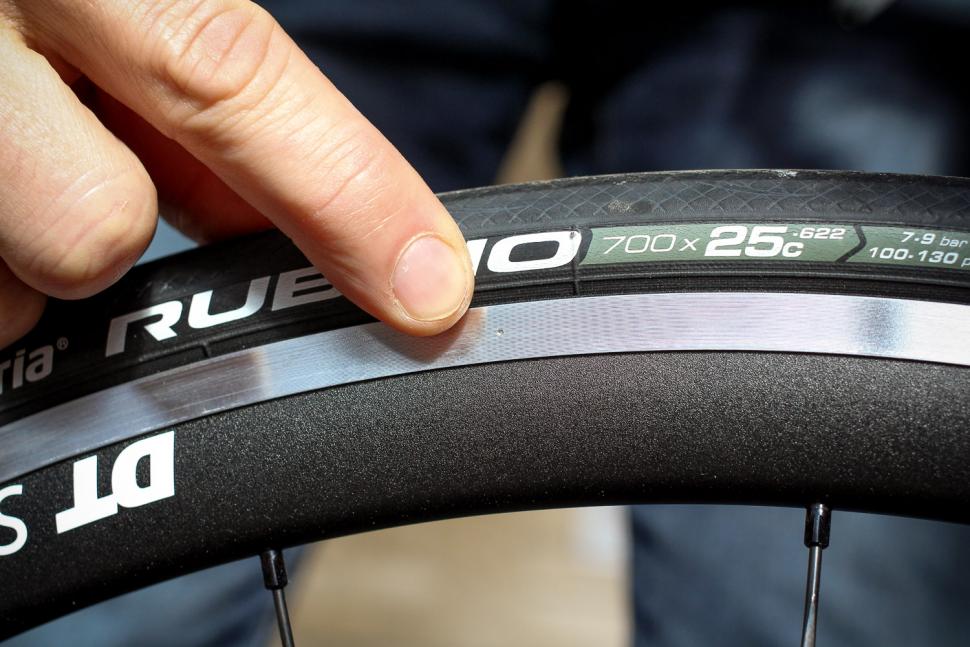 Rim wear -2.jpg
Rim wear -2.jpgHow to tell when your wheel rims have worn out — and how to make them last longer
You don’t need us to tell you that the wheels are one of the most important components on your bike and if you run rim brakes your rims can wear out - that's because whether your wheels are aluminium or carbon every time you brake not only are you shaving small amounts of material from your brake blocks, you're shaving it from the surface of your wheel rims too.
If your rims become too worn then braking performance is going to be compromised, which is far from ideal, and in extreme cases, you run the risk of the wheel failing entirely because there isn't enough material in the rim wall to cope with the forces exerted upon the rim by the high-pressure tyre.
But just how do you know when your rims are worn out? We’re here to help with some top tips for things to look out for.
- 26 of the best road bike wheels — reduce bike weight or get aero gains with new hoops
Aluminium rims
As we said at the top rims primarily wear out because they are used as a braking surface by caliper rim brakes. If you’ve got disc brakes this is something that is eliminated, as the hub-mounted disc rotor is the braking surface, not the rim.
Many rims have a wear indicator. It’s designed to make it really simple to determine when a rim is nearing the end of its life, and remove any risk about when you should replace it.
There are two common types, a groove or a hole. A groove, like the one in the pic above, is added to the entire circumference of the rim at the centre of the braking surface. Over time this groove becomes more shallow and when it disappears, it’s time to replace the rim.
The other common wear indicator is a small hole in the sidewall, like in the photo at the top of the article. When this hole disappears, you know it’s time to replace the rim. Easy.
Why does a rim wear out though?
The constant pressure of the brake block pressing against the aluminium rim slowly wears out the rim. It's that simple. That black muck that you wash off your bike after a wet and gritty ride? That’s your aluminium rims wearing away.
- How to fit calliper brake pads
“In the course of this second function as a braking surface, rims may be subject to wear, especially from intensive or prolonged use. Rims may experience wear for reasons as diverse as the build-up of gravel or mud in the brake pads or the use of worn or poorly adjusted brake pads. These can wear down or damage the rim sidewalls, and may not be noticed by the user,” says Mavic.
How long a rim lasts depends on many factors. Mainly it comes down to how much you ride and how often you brake, and the terrain you ride can be a factor as well. Live in the mountains? You’ll probably use your brakes quite a lot. Commuting in a flat city? Maybe not as much, at least not as heavily as trying to slow down from 80kph!
We asked Shimano's Ben Hillsdon how long you can expect a rim to last. He says: "It's difficult to say because it depends on the force of your braking and the cleanliness of your pads and your rim. If you can avoid excessively dragging the brakes and if you clean your bike regularly, paying particular attention to the braking track on the wheels and the face of the brake pad you'll significantly extend the life of your wheels."
Hunt's Ollie Gray says many variables including brake block compound, the frequency of braking, terrain and weather conditions can have an effect on rim lifespan. "The lifespan can fall within a pretty huge window," he explains. "In the worst cases, riders may experience rim lifespans as short as 1500 miles, and in the best cases perhaps up to 12000 miles! So as you can see, it’s a tricky one to put a figure on."
Not all rims are the same either. Some are designed to be as light as possible so the sidewalls will be thinner to reduce weight, while rims designed for heavier duty riding like touring and commuting will have more material in the braking surface and will last longer. Ceramic coated rims can improve the longevity of a rim but cost a lot more than a regular rim but can be a good option if you do a lot of miles.
Cleaning your rims
It's worth paying close attention to the rims. Make it a part of your regular bike wash and maintenance schedule, paying particular attention to the profile and condition of the rims and also the brake blocks. You'll want to remove any debris or grit that might be caught in the brake block as this can damage the brake surface of the rim.
Regular cleaning of your wheel rims and brake calipers is a good recommendation, as important as cleaning the chain and derailleurs. A regular visual inspection will alert you to a worn rim or brake blocks. For cleaning the rims, you can just use the same cleaner as you use for the rest of the bike, something like Muc-Off or hot soapy water, to clean the rims and brakes. You can use an isopropyl alcohol or a degreaser to clean the rims more thoroughly and use one of those sponges with a scourer on the other side.
If you want to really get the rims clean, you could invest in something like Mavic's abrasive wheel rubber.
Turning your attention to the brake blocks, you'll want to remove any debris, stones or glass that can sometimes get embedded in the rubber. Left untouched, this debris will damage the rim and also lead to decreased braking performance. It's easier to remove the wheels to get a closer look at the brake blocks. Use a pair of tweezers and pry out any debris. Also, remove any buildup of crud in the grooves.
The brake blocks will wear out a lot more quickly than the rims, that's okay they're designed that way. You can choose different types of brake blocks to suit different conditions. Generally, a softer compound will prolong the rim life compared to a harder compound brake block.
And the compound of the brake blocks you use can make a difference too. Hunt's Ollie Grey tells us: "Again, there are a few variables to consider but on a basic level: softer compound pads, which offer greater modulation and are best used during the dry/summer months, won’t deteriorate the rim’s braking surface as much as they’ll deteriorate themselves. Harder pads are better for year-round riding, but owing to their firmer compounds will cause more wear on the braking track over time."
Shimano recommends using a certain quality of pad to match certain brake calipers. "All Shimano rim brake clincher wheels have an aluminium braking surface so with these you don't need to use a specific type of pad compound, although we recommend a certain quality of pad to match certain brake calipers. Our Tubular wheels require carbon-specific pads. Whether you use Shimano Dura Ace, Ultegra or 105 calipers though they are all compatible with the standard R55C4 or carbon-specific R55C4-A brake shoes," explains Shimano's Ben Hillsdon.
A brand new rim has a flat braking surface. A highly worn rim is easily identifiable by a concave shape. You can spot it by eye or you can use something with a straight edge, a small tool, to detect the curved shape of the rim. The concave shape of the rim is caused by the reduced thickness of the rim, the material has literally been worn away with all the braking.
That reduced thickness will eventually lead to a structural failure with the thin rim insufficient to contain the tyre bead under high pressure. It can either happen when you inflate the tyre, or worse when you’re riding. The latter is definitely something you want to avoid.
Carbon fibre rims
That’s all for aluminium rims, but what if you’ve got carbon wheels? Generally speaking, you want to follow the same steps as with aluminium rims, regularly checking for debris caught in the brake block and ensuring all surfaces are cleaned on a regular basis.
As for checking for rim wear, it’s worth checking with the maker of your carbon rims to find out what they recommend. A concave rim, just like with an aluminium rim, is a telltale sign of a worn carbon rim so that’s one thing to check for.
But it's harder to tell by eye when a carbon rim is worn out - you won’t find handy wear indicators like on an aluminium rim, so you want to pay particular attention to the carbon surface.
Generally speaking, carbon fibre rims are constructed with a special layer of material laid over the brake track to give a good braking performance, prevent heat buildup and prolong the life of the rim. Underneath this top layer is the raw carbon weave. If you’ve been using your carbon wheels so much that this structural layer has become exposed, then it could be time to replace the rim. Sometimes the rim can become discoloured in this area, or you can see through the top layer of carbon.
Hunt's Ollie Gray backs this up, adding that you need to check for exposed carbon weave. "Carbon brake tracks are much more resilient than alloy braking surfaces and generally will not show the same bowing/caving that alloy surfaces do. Whilst they will curve inwards to a degree, this is not normally the tell-tale. What you should look for instead is when the woven fibres of the carbon itself begin to become exposed or frayed," he says.
"If you run your hand/fingers across the braking surface and it feels rough or fibrous, that’s normally a sign the resin has worn away. As stated above, however, this resin on carbon braking tracks is quite resilient, and of course carbon brake pads are of a softer compound, again contributing to the increased lifespan. To date, we’ve not known of any of our carbon wheelsets out on the road to have completed a lifespan."
You might also notice a judder during braking that didn’t occur when the carbon wheels were brand new. This could be a sign of the brake track wearing out and would be a good time to get the rims professionally inspected.
Each carbon rim brand recommends a specific brake block and it's strongly recommended to stick with this recommendation, as using another carbon-specific brake block could have an adverse effect on the rims.
"You must use the proper brake pads for your specific rims. Use of improper or contaminated brake pads will lead to excessively high braking temperatures which can cause premature rim wear and/or failure which can lead to serious injury and/or death," warns Zipp.
So now you know how to spot a worn out rim, what are your choices for replacing the worn rim? In most cases, you can replace the rim, and all good bike shops will happily do the work for you. Building a wheel isn’t as scary as you might imagine if you fancy doing the work yourself, and there are lots of good wheel building guides available online if you want to go down that route.
- When should you change your tyres?
So, do you need to check for rim wear if your bike has disc brakes?
No.
David worked on the road.cc tech team from 2012-2020. Previously he was editor of Bikemagic.com and before that staff writer at RCUK. He's a seasoned cyclist of all disciplines, from road to mountain biking, touring to cyclo-cross, he only wishes he had time to ride them all. He's mildly competitive, though he'll never admit it, and is a frequent road racer but is too lazy to do really well. He currently resides in the Cotswolds, and you can now find him over on his own YouTube channel David Arthur - Just Ride Bikes.
Latest Comments
- Sredlums 2 hours 11 min ago
Hahaha :-P
- eburtthebike 2 hours 21 min ago
“More of the same please. Too many middle-class, middle-aged people around here think it’s their right to cycle on the pavement.”...
- chrisonabike 2 hours 23 min ago
Ah, but they're used by crims! Feckless yoof probably dealing / stealing when they're not wheelying down the roads or pavements (is it them that...
- Hirsute 5 hours 29 min ago
The point is the design should allow for wider tyres when they are most needed.
- mikewood 6 hours 10 min ago
Surely actually hitting another road user PROVES their driving was dangerous! There's no opinion involved...
- ktache 6 hours 15 min ago
I realised some time back, that if I was running a bit late at work and needed to get a wriggle on to catch the train, that I make up most time on...
- Mr Anderson 6 hours 25 min ago
Two more years Geraint?
- Rendel Harris 6 hours 54 min ago
In fact the last three Tours have started, respectively, in Copenhagen, Bilbao and Florence so the tradition of alternate years seems to have been...
- PenLaw 7 hours 16 min ago
Where were you on the morning of the 18th January?
- tony.westclassics@live.co.uk 7 hours 54 min ago
Has anyone tried to cancell there Discovery+ sub, they try every trick in the book to keep your money, I tried, got to pass word and another page...
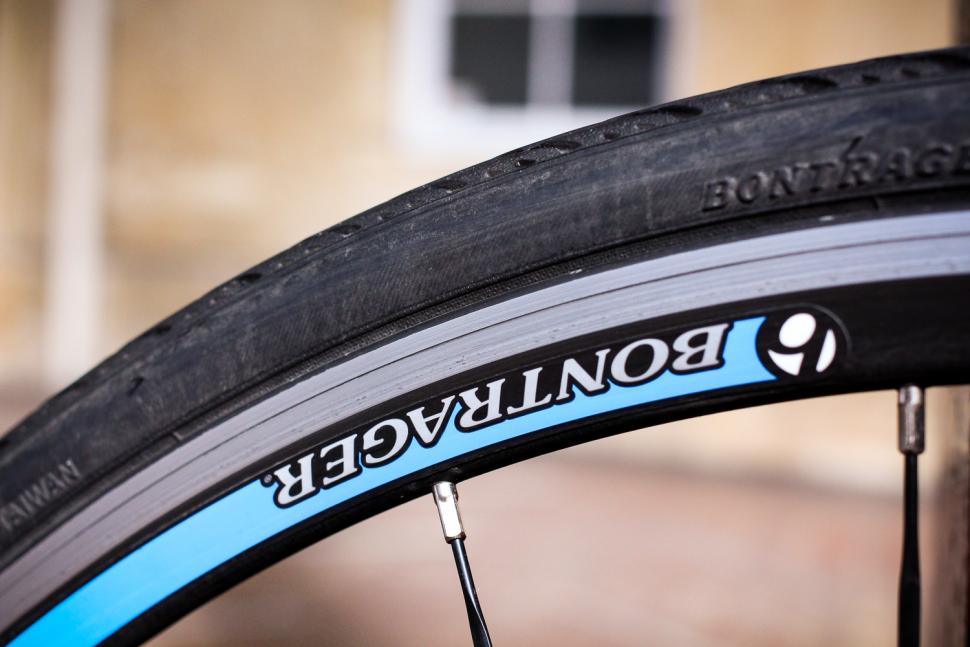
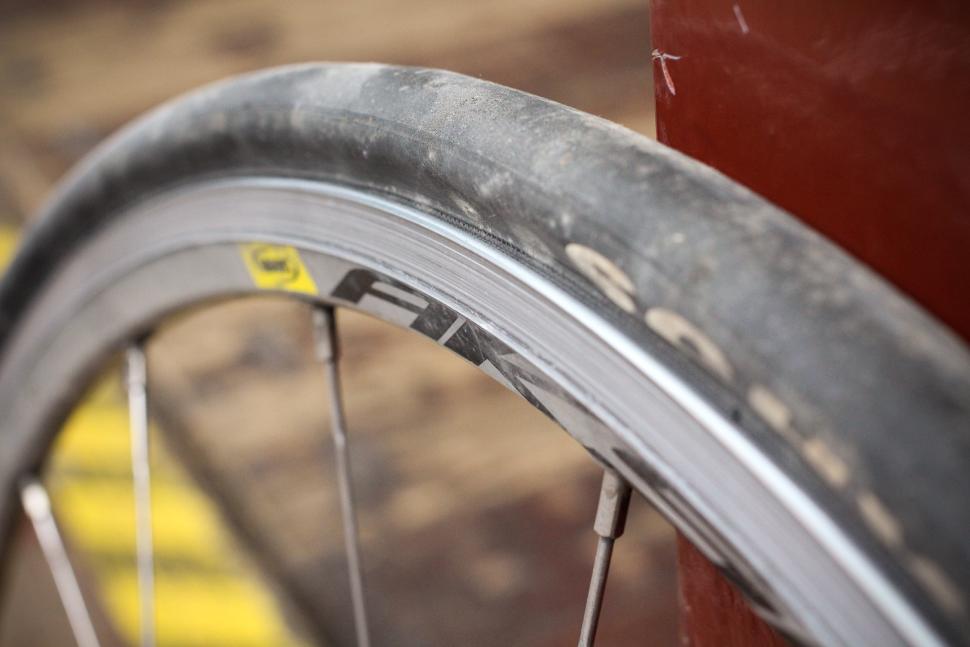

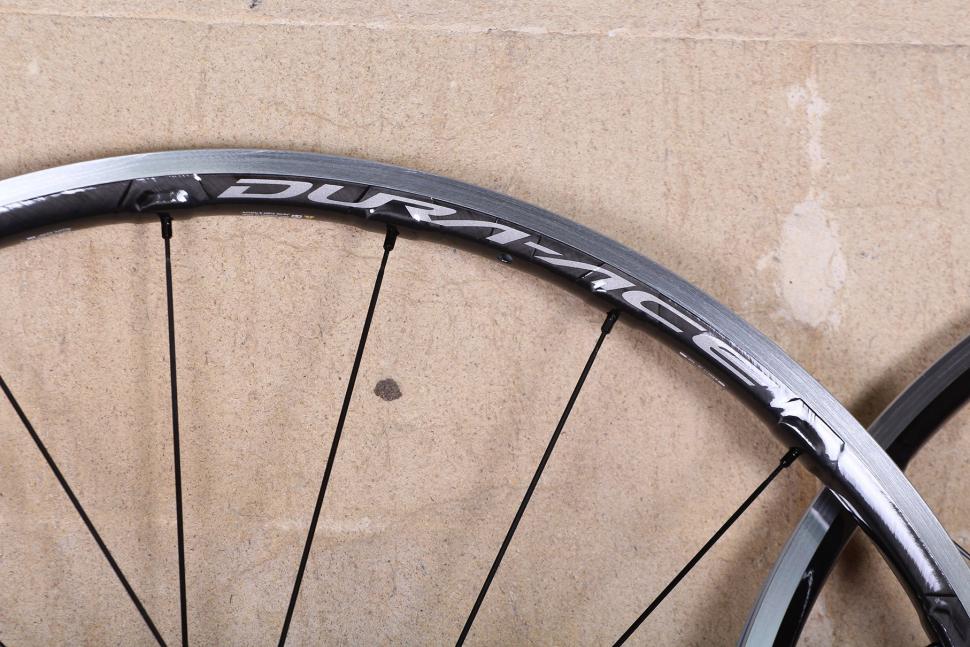

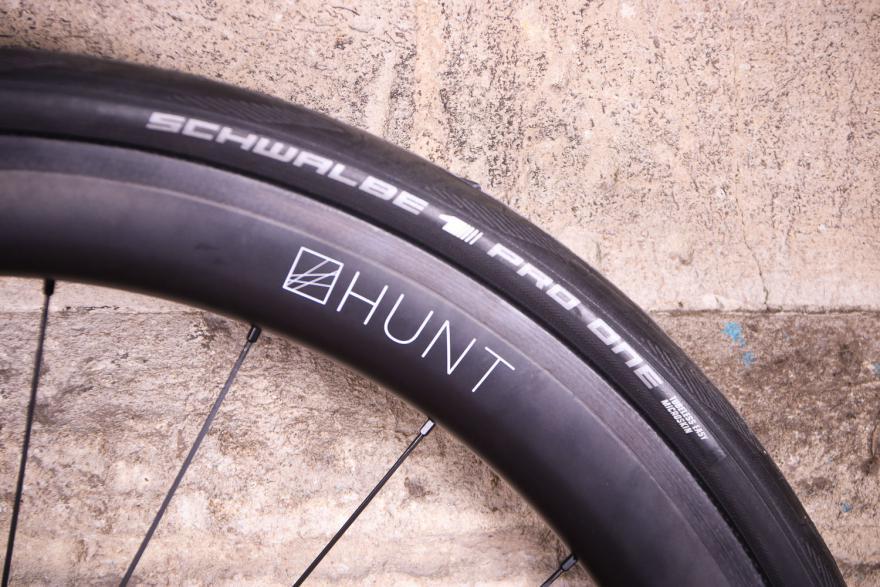
Add new comment
22 comments
None of my road bikes are showing any significant rim wear after 6000km or so, a combination of summer use only for the good bike and/or Swissstop blue pads on the winter trainer and singlespeed commuter I think.
Rims on the gravel bike were faring well until I put them through a winter of CX, which is fair enough as I was purposefully seeking out twisty muddy trails in the worst possible weather! No catastrophic failure but I wanged a rock I hadn't seen and limped home on a bulged rim that I had no inclination to try and straighten.
I'd agree discs are the common sense solution for wet and muddy riding but I haven't found a rotor or pad combo that stays even reasonably quiet in wet and cold conditions. One evening a year rebuilding a front wheel is worth it for silent braking in the rain and mud between October and March! 😎
Steel wool is good for cleaning rims; old toothbrush for the pads; I use soft compound pads - excellent for braking power in the wet and the pads wear out rather than the rims.
How to tell when a rim is worn: when the bike doesn't come with disc brakes.
I have had rims break. Mostly mtb but also racing. My pads are pretty close to the rims. Before a rim breaks the thin part starts to bulge under the tyre pressure. You can hear when the pads hit the bulge on every rotation. Time to build a new wheel. Simple as that.
My rears tended to do the cracking thing so I would notice the feeling on the brake, as the edge of the rim would bulge.
The fronts would fail catastophically, suddenly peeling away with the tube then exploding and the wheel would then trap itself between the brake blocks. Somehow this never happened to me as I was travelling at speed or in heavy traffic, though I did try to start to change the rim before this, noticing heavy rim wear so as to avoid the catastophic failure.
There's an informative thread in the Cycling UK (CTC) forum:
https://forum.cyclinguk.org/viewtopic.php?f=5&t=130806&p=1366618&hilit=r...
It recommends an iwanson gauge to measure the rim wall thickness. (Google it for details - a dental tool for measuring thickness of things in awkward places, not expensive).
There are some pics of various rim profiles with severe wear. Some rims are built to prevent collapse even when the rim wears through; many are not so-built and will collapse.
0.7mm seems the thinnest one should go although 1mm seems safer. That needs to be the thinnest part of the whole rim, so multiple measurements of rim thickness are advisable.
This is an interesting fact, though:
"The strength of the rim is inversely proportional to the cube of the wall thickness".
So a rim just strong enough at, say, 1mm will soon be not strong enough with only another 0.1mm or so worn off.
Cugel
The basic Mavic aluminium rims on my bike are 5 years/10,000 miles old and are pretty worn! It seems pointless to replace without upgrading to carbons, but then the bottom bearing is also worn, and so I'm working out some man-maths equations to justify a new bike, on the basis that my bike is beyond 'economic repair' 😜 (of course I'll keep the bike as a winter bike with like for like replacement wheels).
One of these, only a fiver, is very helpful:
https://www.proopsbrothers.com/bicycle-rim-douzieme-gauge-d8005-446-p.asp
although you do have to take the tyre off.
The clue is in the words “clincher” and “tubular”. Two different types of rim, aluminium clinchers use non specific pads and carbon tubulars require carbon specific pads
Can someone translate what appears to be a contradictory statement:
"All Shimano rim brake clincher wheels have an aluminium braking surface so with these you don't need to use a specific type of pad compound... Our Tubular wheels require carbon-specific pads."
Shimano alu rims require carbon specific pads? wtf.
BTLOS Graphene Special Braking Surface
Not had a rim fail since going to disc brakes.
Used to regularly replace worn rims, I had a few crack and one failed catasropically. I was lucky not to be seriously hurt on that occasion. Road tyres pumped to 100psi made that rim fail quite spectacularly.
All my bikes go on and off road a lot, add to that lots of grit here and sand from beach near my mum's house even on the roads, neither are kind to rim brake surfaces.
measuring the outer bead can help, a fair few rims today are much thinner than their yesteryear counterpart in the braking wall thickness, especially with the wider rims for wider tyres which to keep the weight down sacrifices are made elsewhere.
It's the one area that disc systems have a definite advantage over rim braked bikes.
One of many areas actually.
Yawn
http://road.cc/content/news/232524-cyclist-screamed-%E2%80%9Cmy-brakes-h...
I had a worn rim fail on me, luckily when the bike was in my flat. I had acquired a pair of wheels with CXP20 rims FOC and rebuilt the rear onto a single speed hub. I had a year's use from them when the rear tyre was a little soft so I pumped it up, maybe a little too much when 3 minutes later I heard noises in the flat but couldn't work out where it was coming from so muted the TV and was about to investigate when the rim gave way.
Until September last I was still using an early 90s Sansin/MA2 front wheel on my daily, it came to me second hand with a bike I bought mainly for parts. Cleaning the rims and pads regularly and thinking about your braking/planning in advance has such a massive impact on rim wear.
I also use a ceramic rear which is what I do most of my speed retardation on, only when I need more power do I engage the front, so retarding braking a bit earlier, thinking about light phases and when to ease off the pedals, just the same as in a motor really, served me plenty well as a method for almost 20 years.
The only reason the MA2 is no longer in use is that I was driven into and put it well out of shape otherwise it'd still be going, 10 years on a commuter bike is pretty good going.
Oh and for alu rims, astonish paste, £1 a tub and cleans up rims perfectly as well as chromed bits too.
Only a total berk would ride a wheel until it crumpled getting out of the saddle to pull off at a T- junction
Wheel Fail.jpg
Any easy way to tell when to replace a Mavic Ksyrium WTS rim is on its last legs (other than the concaveness of the brake track)? I had a rear (Kysrium Equipe) fail recently after about 5 years, though through one of the nipples pulling through the rim rather than the brake track failing. Never could find any wear indicator on those, nor is there any evident on the replacements
After working on my winter bike yesterday I started to wonder about that too. Mavic Ksyrium Equipe from a 2014 bike that have now been on a couple of different bikes. Ended up on the winter / commuter last year. Will have a hard ife since coming across.
I read that that some Mavic's have an internal wear indicator that shows up when wear is too great. If so does anyone know if these wheels would have them? The manual I found on the internet was too generic to help.
As far as I know, no. I had 2011 Ksyrium Equipes. They eventually got very concave, though who knows what I consider to be "very concave" is compared to anyone else's opinion ! Anyway, the rear then started grabbing under braking, and I finally retired them. There was no wear indicator when new as far as I could see, and none when worn (well, apart from the concavity !).
After working on my winter bike yesterday I started to wonder about that too. Mavic Ksyrium Equipe from a 2014 bike that have now been on a couple of different bikes. Ended up on the winter / commuter last year. Will have a hard ife since coming across.
I read that that some Mavic's have an internal wear indicator that shows up when wear is too great. If so does anyone know if these wheels would have them? The manual I found on the internet was too generic to help.
[I have Mavic Ksyrium Elite on two bikes and both have these rim decals indicating where the wear holes appear. Hope that helps. Not worn down to them yet but the front one on my TT is definitely near the end and I'm considering replacing now before the wear indicators show as I'm nervous of it going at high speed (and my husband is too).
WP_20190731_003.jpg